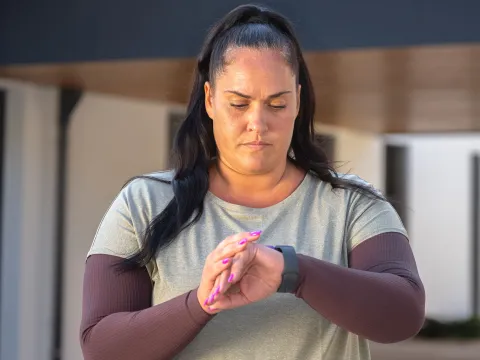- AdventHealth

Dallas Cowboys quarterback Dak Prescott suffered a serious ankle injury during their Sunday Night Football game against the New York Giants. Prescott was carted off the field in tears, and fans later learned he had a compound ankle fracture and dislocation. So, what does this mean for Prescott and how soon can he expect to heal?
A compound ankle fracture occurs when part of the bone broke through the skin at the moment of injury. Prescott was immediately taken into surgery after the game, because open fractures must be treated right away to minimize risk of infection to the open wound.
As soon as the injury occurred on the field, Prescott was treated with sterile dressing to protect the site before he was prepped for surgery.
According to the Cowboys head coach, Mike McCarthy, this ankle injury is likely the end of their starting quarterback’s season.
Caring for a Compound Fracture
Doug Allen MPT, ATC, board certified orthopaedic specialist, explains that the talocrural joint, otherwise known as the ankle, is made up of the tibia, fibula and talus. The tibia and fibula are your lower leg bones and the talus bone is part of your rear foot that sits on top of your heel bone (calcaneous) and underneath the tibia and fibula. When it comes to Prescott’s injury, we don’t yet know which bone was fractured, or if there was also tissue damage.
It may seem surprising to some that Prescott suffered his injury Sunday evening and was already home from surgery by Monday, approximately 24 hours after he was taken to the hospital.
“Though we don’t know for sure the details of his operation, there is a process called ‘reduction,’” explains William Browning III, MD, orthopedic surgeon trained in sports medicine. “During reduction, the bones are put back in place and set as soon as possible after the injury so the ankle can heal correctly, hopefully as close to the previous positioning as possible, to prevent any further issues.” In some cases, pins, rods or plates would also need to be inserted to help with bone stay in place and provide stability.
Now that Prescott is back home recovering, he’s restricted to minimal movement so his ankle can heal properly. “It’s very important to keep weight off of the ankle when we’re talking about a recovery like this,” says Doug Allen. The strict, limited mobility recovery process, and weight bearing restrictions, could be anywhere from four to six weeks, and once his care providers determine the fracture is healing correctly, Dak is likely to begin physical therapy for an additional amount of time.
“Of course, it depends on the specific person and how they’re healing and progressing,” says Doug Allen, “but as the patient starts to put more weight on their ankle, physical therapy can progress and should continue for 4-6 months, and in this case, adding several more months of working with the team’s athletic trainer in order for him to return to playing.”
In 2013, the National Athletic Trainers Association issued a position statement that ankle injuries should never be taken lightly and are too often mistreated or not treated at all. This can result in an ankle prone to problems, prolonged discomfort and possible re-injury, which can mean further reduced physical activity levels.
And with an injury that never gets better, whether it's your ankle or another area, it can become easy to slip into the habits that of a sedentary lifestyle, which can then to further long-term health complications.
Preventing Ankle Injuries
Regular stretching, balance/proprioception and strengthening exercises can help minimize your risks of injury and improve motion in all areas of the body. You can use a variety of stretching techniques to make sure you have full range of motion at all joints and lessen your chances of injuries too.
Progressive strengthening exercises allow you to better stabilize yourself during activity. Balancing exercises train your body to know where it is in space and reduce your injury rate. Other tips for preventing injuries include:
- Be in the right physical condition for the sport you're playing
- Eat healthy to keep your muscles strong
- Exercise daily
- Keep a healthy weight
- Keep your home safe to prevent slips and falls
- Run on flat surfaces to prevent tripping
- Try to exercise or play sports when you're alert and not tired
- Wear protective gear when playing sports
- Wear the right shoes for the sport you're playing
For more information about preventing injuries or to speak with a physical therapist, call
Call833-787-6755 or visit AdventHealth Sports Med and Rehab. For information on orthopedic surgeries or to speak to a member of our team, call
Call407-543-4639 or click here.




